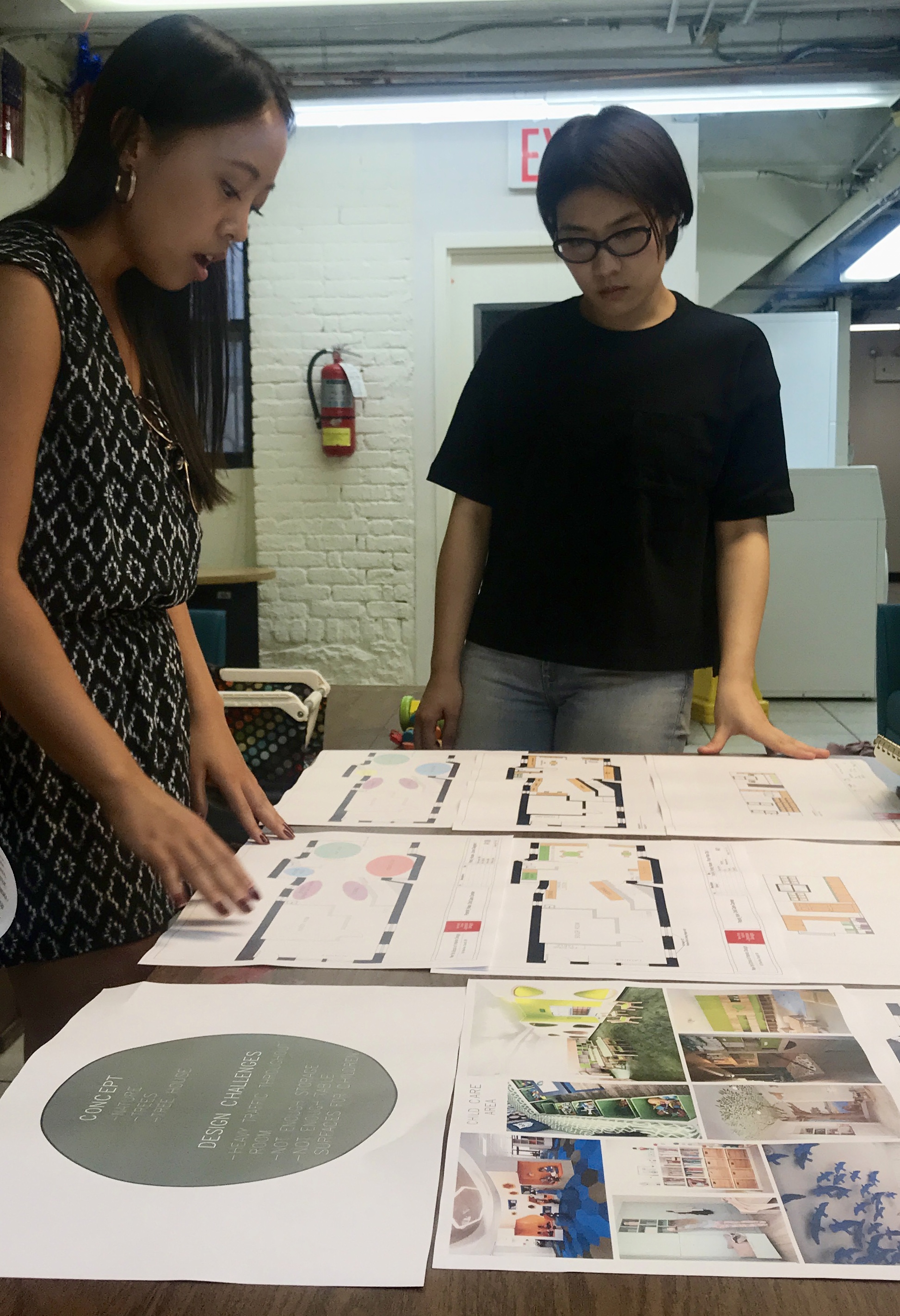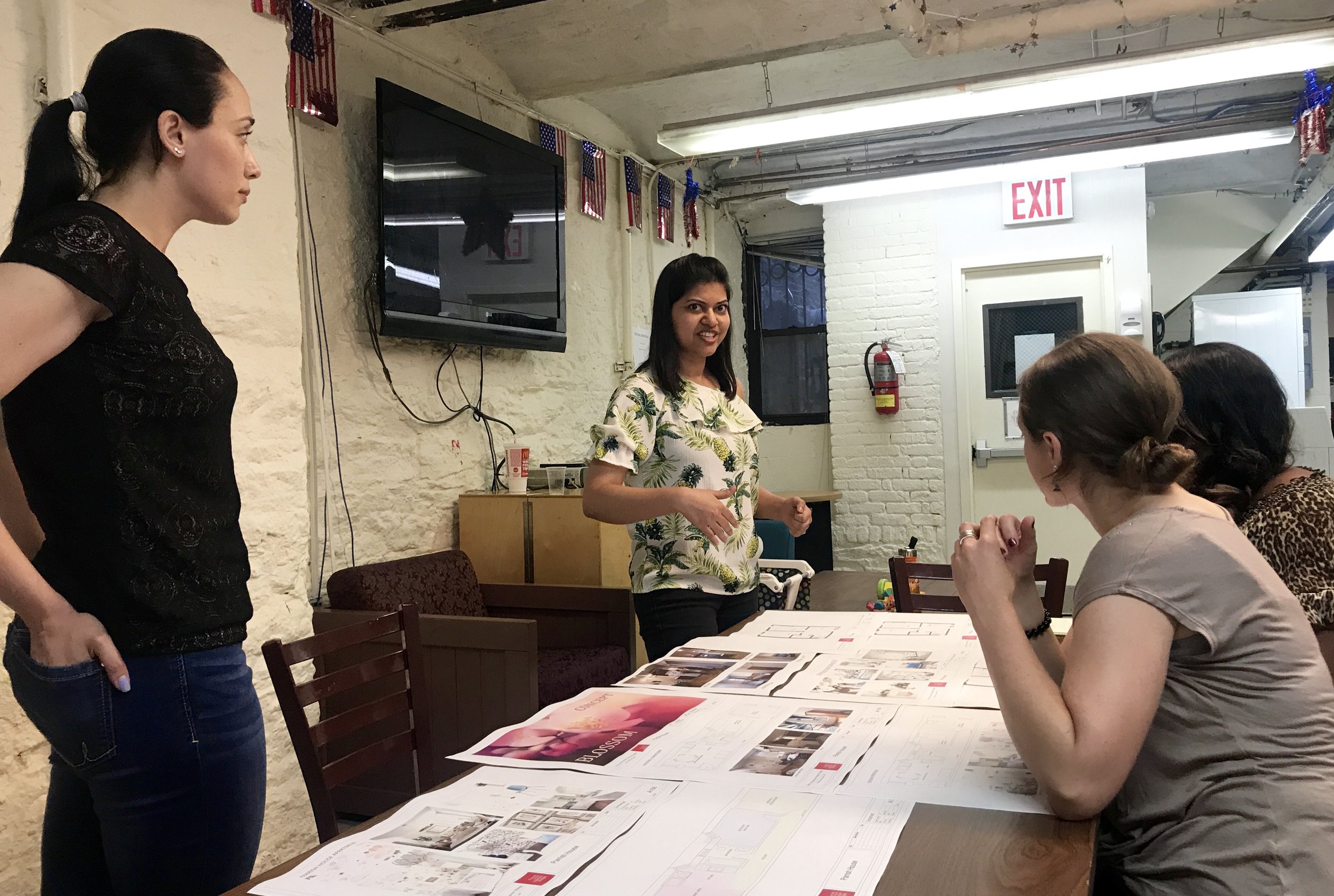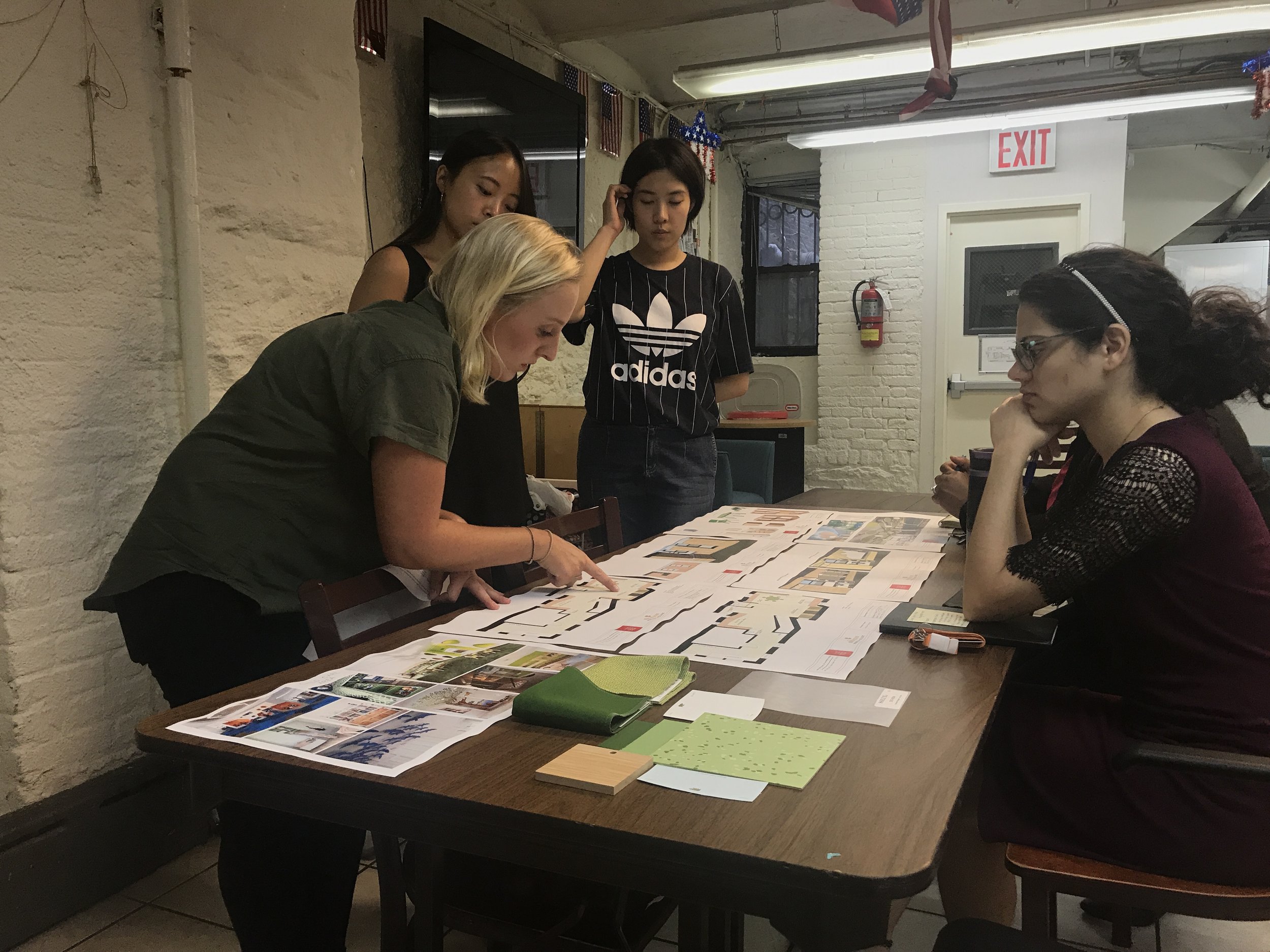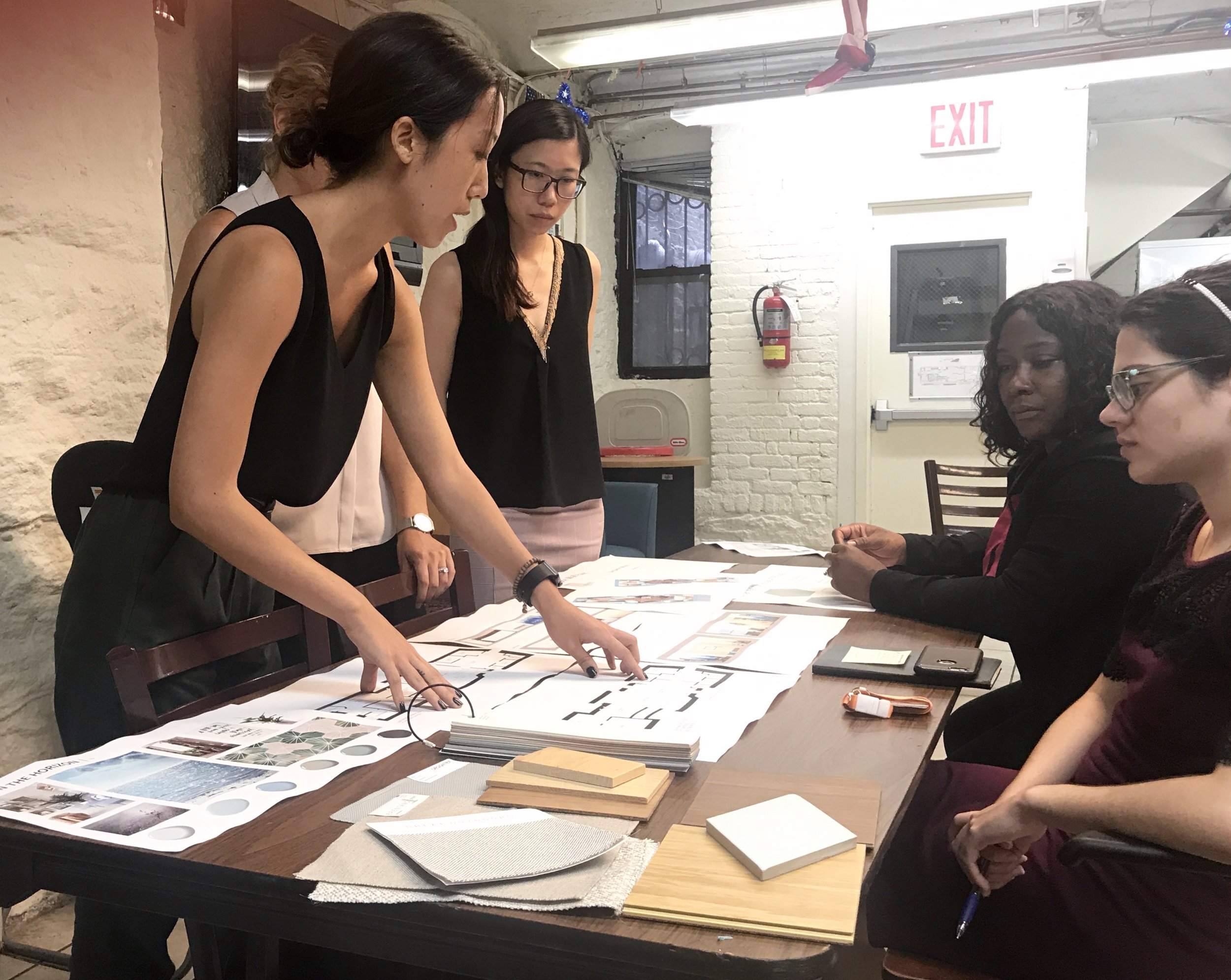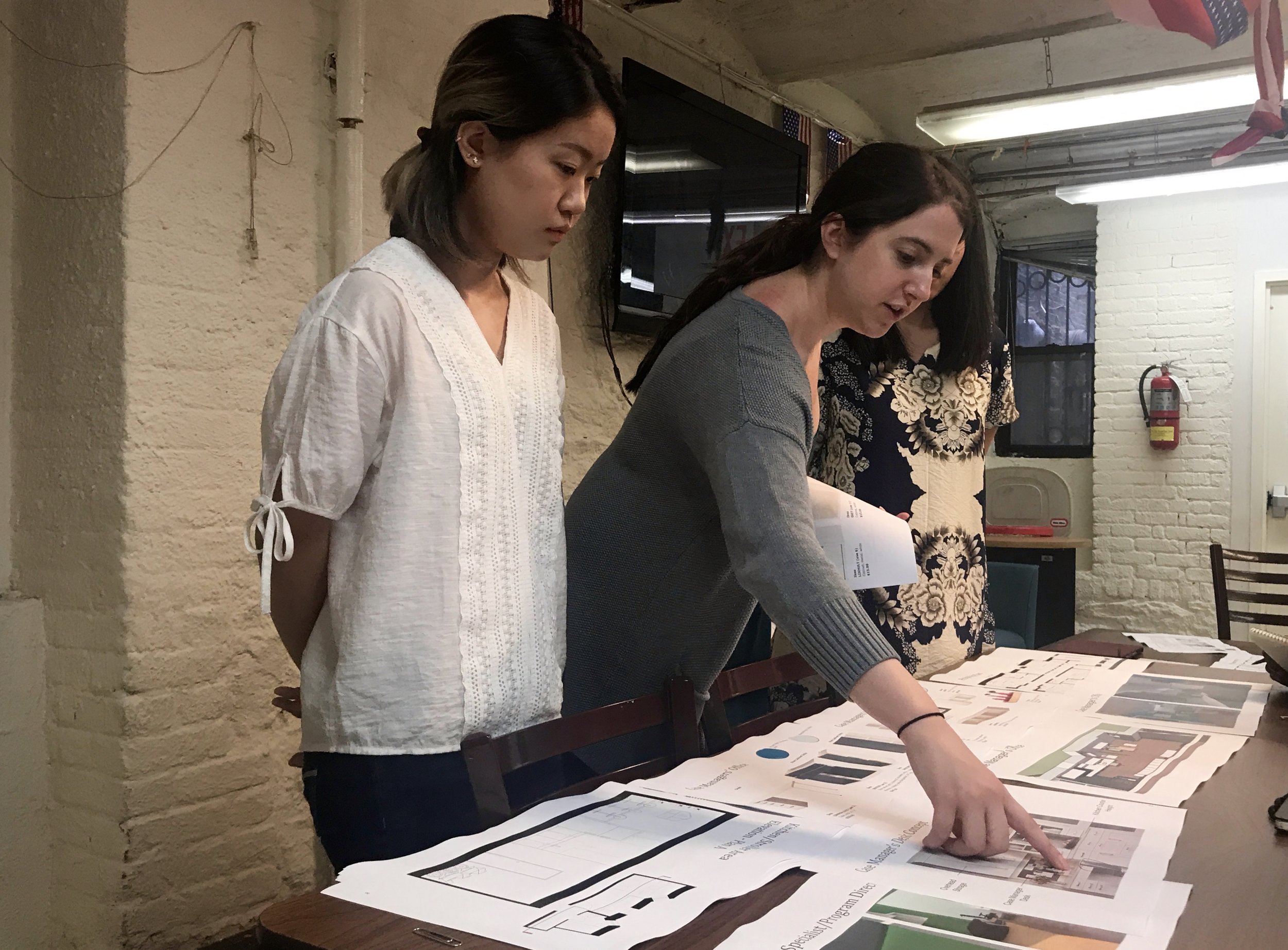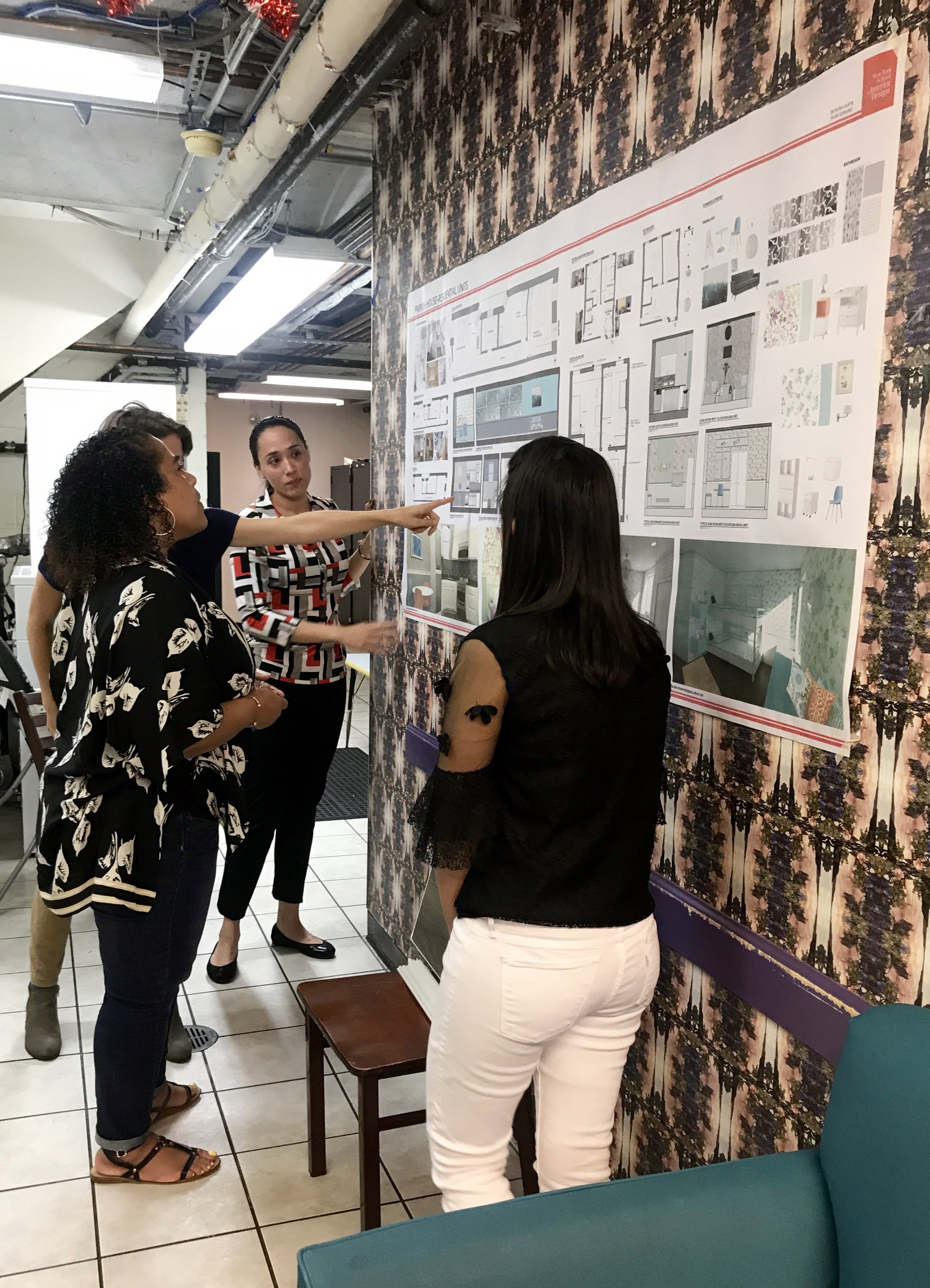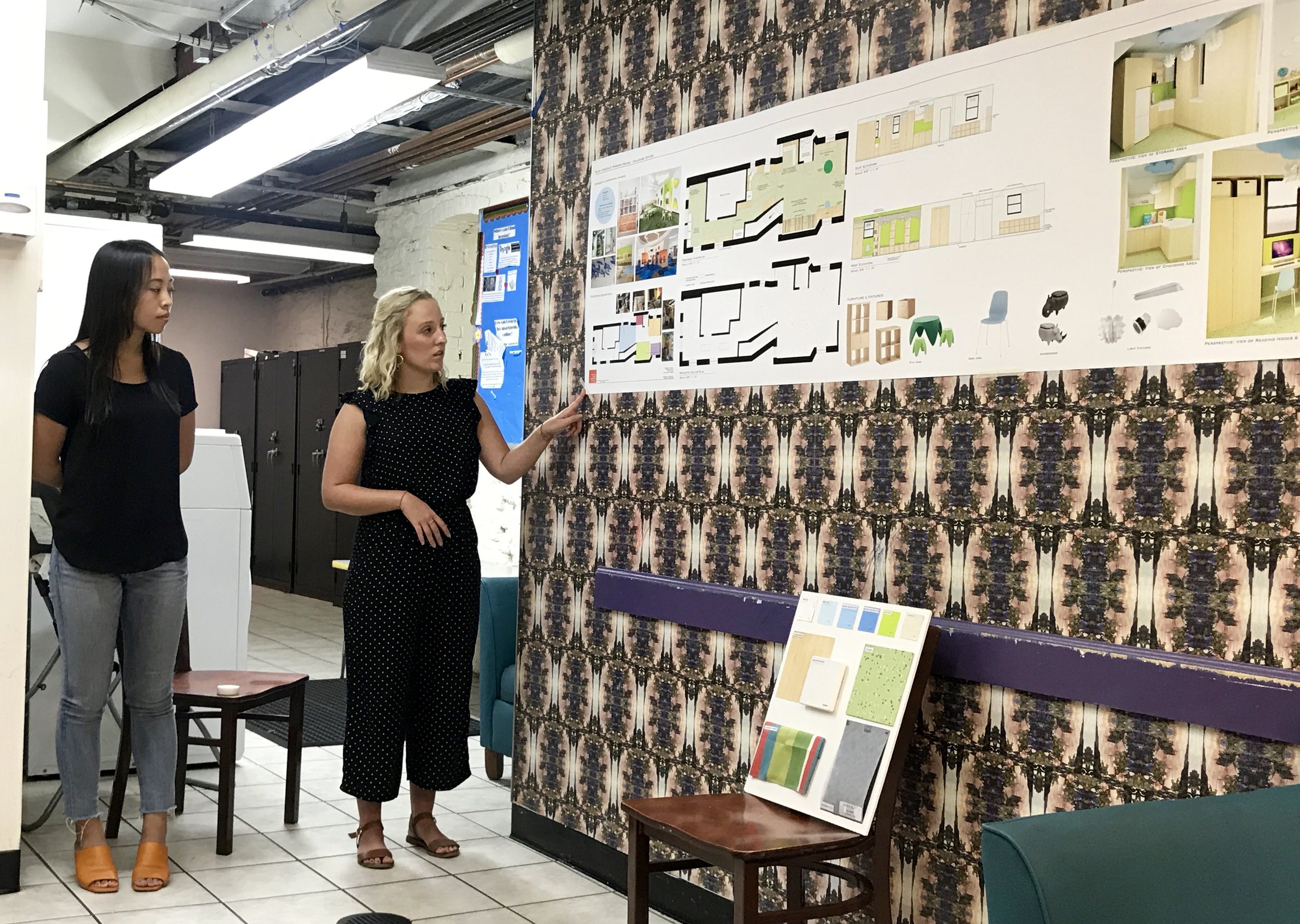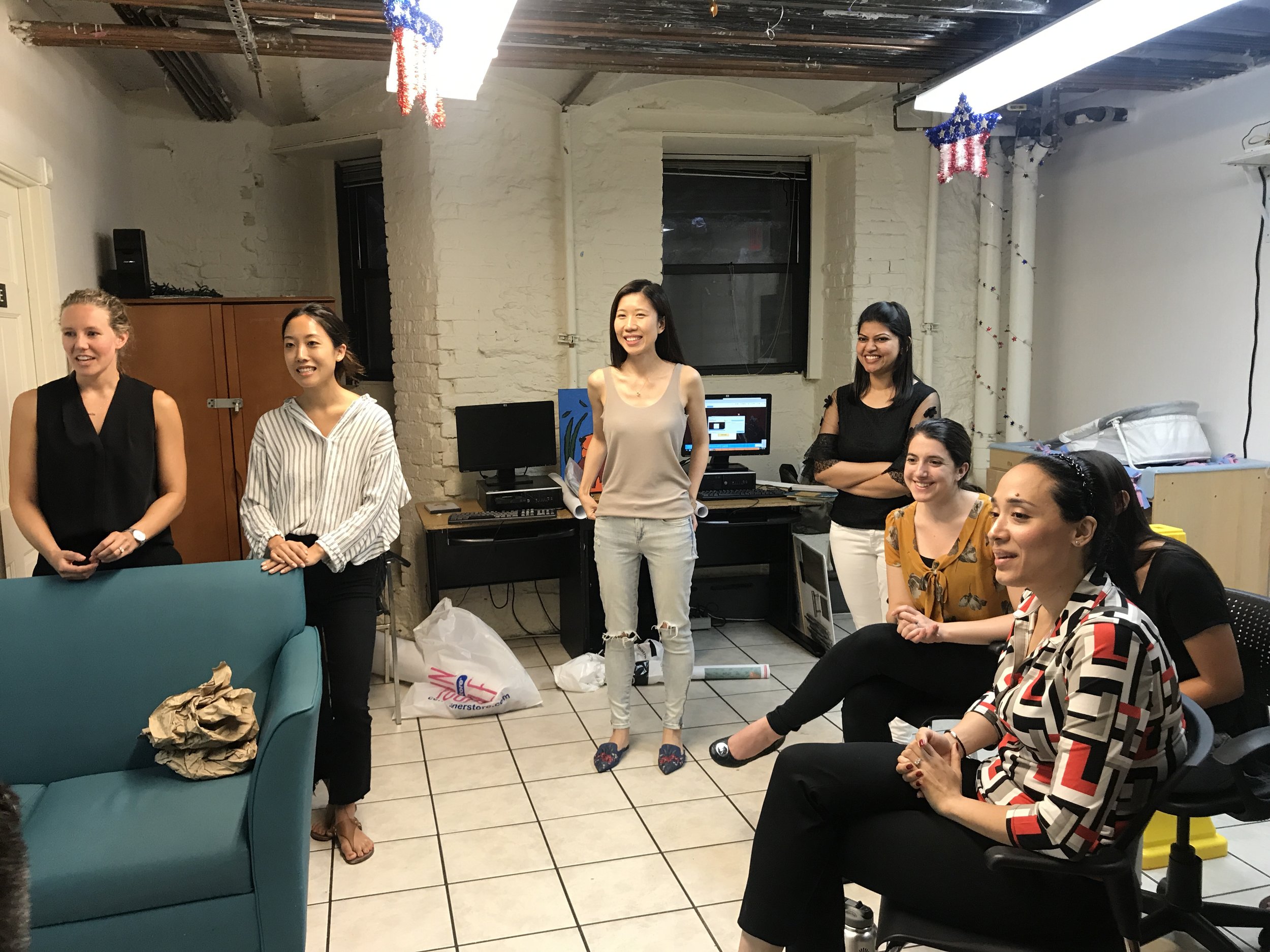NYSID students give hope to survivors of domestic violence through design
This summer, NYSID students were part of an unparalleled experience during their time spent at a shelter in West Harlem focusing on addressing social issues through design.
In 2014, the New York School of Interior Design introduced a Service Learning Studio as one of several electives in the required summer Experiential Learning course curriculum for MFA-1 students. The Service Learning Studio focuses on addressing social issues through a design lens and has teamed up with partners such as Safe Horizon, a non-profit victim services agency, and NYPD’s 73rd Police Precinct. Architect and faculty member Terry Kleinberg embraced this effort and has led this studio for the past 3 summers.
Over the summer, NYSID students researched and visited a domestic violence shelter, The Parrish House, to produce innovative design strategies. Upon the course’s completion, students felt proud and gratified knowing their work has the possibility of being implemented in a way to give hope and a new beginning to survivors of domestic violence through design.
“I really enjoy forging relationships with the clients, and I feel fortunate to play a role in helping them,” said Terry Kleinberg. “Perhaps my greatest reward is seeing what a profound impact the experience has on students, how hard it pushes them to work, how well they work in groups, and how uncompetitive the work is. It’s not about getting the best grades or having the best renderings for their portfolios, but about achieving the best possible outcome for people in need.”
Tell us more about NYSID’s Experiential Learning course? Are social issues a part of the course’s curriculum?
Kleinberg: Students enrolled in this course work on design projects for a real client who intends to build their work in the future. The facility, located in West Harlem, was an existing shelter sorely in need of improvement. A total of eleven students broke up into four teams and produced designs for the day care area, the residents’ lounge, the administrative offices and intake area, and typical residential units. The students started by researching issues around domestic violence and trauma-informed design, so social issues were very much a part of the curriculum. Next they made a site visit and interviewed a team of stakeholders including administrators, social workers, and maintenance manager, after which we alternated weeks of presenting to the client for their feedback and pinning up work in class for discussion. The end products were a final client presentation of drawings, renderings and material samples, and a set of detailed drawings including dimensions and product specifications.
As students, how was it working on this project with Safe Horizon?
Diana Soriano: I think helping others and giving back to the community is something that must be done. Hopefully one day we can go back to the shelter and see the space remodeled, giving hope and a new beginning to the survivors of domestic violence.
Mika Jiaravanont: It made a huge difference to me knowing that our work had the possibility of being realized. Any impact we could make for those who truly need it was a more powerful driving force than I could have imagined.
Every 9 seconds in the US a woman is assaulted or beaten. Why was it important for your students to research domestic violence and trauma-informed design?
Kleinberg: It was really important for the students to understand their primary user group before they could start work. Their research exposed them to the circumstances and needs of both the residents and staff. Though they were able to interview staff and observe the way residents and staff used the facilities, they were unable to interview residents directly, making their research especially important.
How did your research and visits to the domestic violence shelter, while actively around victims, inspire your design strategy?
Mika Jiaravanont: My experience with the service learning program this summer was unparalleled. Having real clients with real-time feedback gave me the most valuable and gratifying experience I could have had in my first foray into the design industry. Most importantly, working for a client that not only needs, but deserves design renovations made it easier to become more passionate and personally invested. Even with the budgetary constraints the creative process for myself – and for my team as a whole – felt challenging in a good way.
Sarah Salerno: It made me want to go the extra mile knowing that the new space could really make a difference in their lives.
In regards to design, what are some requests both administration and victims wanted?
Kleinberg: The clients didn’t make any aesthetic requests but the students’ research led them to “calming” colors and most teams ended up with palettes in the cream, blue, and green range with some more vibrant colors in the office areas and Day Care room. The students also proposed decorative, translucent window films on side windows to soften views of brick walls in the air shafts.
One big change the students proposed was to reorganize the ground floor administrative offices so that the intake office was in the front. This way, first-time visitors are welcomed immediately instead of being buzzed in and having to find their way back in the building. It seemed important to eliminate that initial disorientation. In the Day Care area, the students were careful to provide places for children to read or play in a protected alcove in case they didn’t feel like interacting with other children, and they made the alcoves wide enough that a grown-up could sit and read to a child.
One of the big challenges for women coming to this shelter is that they are often bringing all their belongings, but the housing is small and temporary (+/- 3 months) and they need safe places to put their things even if they can’t unpack them. The students who designed the residential units were careful to include storage space wherever possible and to provide locks where feasible. They also responded to issues that arise from sharing a unit with another family by color coding doors, furniture, etc. to give the residents clear boundaries and a sense of their own territory.
In all the spaces, there were efforts to make the space feel more “homey” and less institutional, to give the residents a sense of comfort and belonging.
How does it feel knowing that you and your students were able to give back in a positive way that will ultimately change the lives and living conditions of domestic violence victims?
Kleinberg: It feels great to have had a role in helping this population of mothers and their children who arrive at the facility at a time of unimaginable stress. As a teacher of Interior Design, it is especially gratifying to see the impact that design can have on the lives of the people who inhabit these spaces and to watch as the students grasp that reality.
“I was beyond happy to participate in this project. This experience connected most with my initial intention of becoming an interior designer,” said student Xiao Tang.

